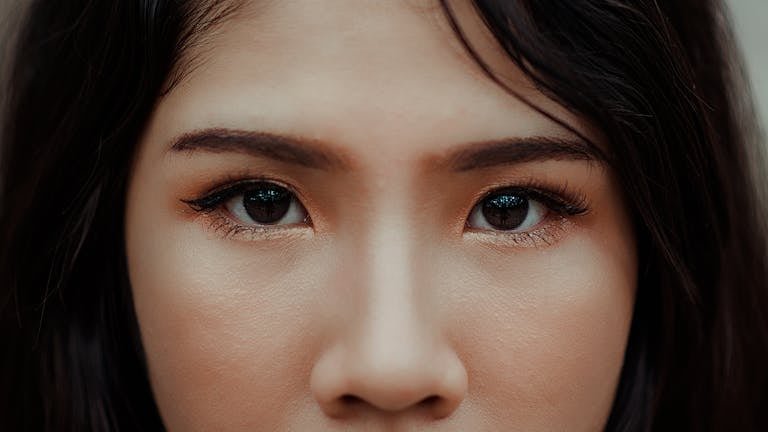Shocking Thyroid Eye Disease Before & After Photos
Thyroid Eye Disease (TED) is a condition that affects the eyes due to an autoimmune disorder, most commonly associated with Graves’ disease. This condition causes inflammation and swelling in the eye muscles and tissues, leading to various symptoms that impact vision, appearance, and overall eye health.
In this detailed guide, I will take you through everything you need to know about TED, its causes, symptoms, treatment options, and the transformation process before and after treatment.

Thyroid Eye Disease (TED) Before and After Treatment: Summary Table
| Aspect | Before Treatment (Active TED) | After Treatment (Post-TED or Surgery) |
|---|---|---|
| Eye Appearance | Bulging, protruded eyes (exophthalmos). | Eyes return closer to normal. |
| Eyelid Position | Eyelid retraction, excessive eye exposure. | More natural eyelid position. |
| Swelling & Puffiness | Inflamed, swollen eyelids and tissues. | Reduced swelling and puffiness. |
| Redness & Irritation | Bloodshot, irritated, and gritty eyes. | Less redness and discomfort. |
| Double Vision | Misaligned eyes, difficulty focusing. | Improved or corrected vision. |
| Eye Pain & Pressure | Pressure and pain behind the eyes. | Reduced discomfort and relief. |
| Tearing & Dryness | Excessive tearing or extreme dryness. | Balanced tear production. |
| Light Sensitivity | High sensitivity to bright light. | Sensitivity decreases. |
| Difficulty Closing Eyes | Incomplete eyelid closure, risk of corneal damage. | Better eye closure and protection. |
| Vision Changes | Blurry vision, depth perception issues. | Clearer vision, reduced blurriness. |
| Optic Nerve Compression | Risk of vision loss in severe cases. | Reduced risk with treatment. |
| Inflammation | Active swelling, worsening symptoms. | Inflammation subsides. |
| Psychological Impact | Anxiety, low confidence, emotional distress. | Bulging, protruding eyes (exophthalmos). |
What is Thyroid Eye Disease?
Thyroid Eye Disease (TED) constitutes an autoimmune condition which medical science knows by the names Graves’ Orbitopathy and Thyroid-Associated Ophthalmopathy (TAO). The condition mostly affects thyroid dysfunction patients who have Graves’ disease, which causes hyperthyroidism. TED manifests across three thyroid disease classifications, which include hypothyroidism (Hashimoto’s thyroiditis) and euthyroid state, besides Graves’ Disease (hyperthyroidism).

The tissue swelling caused by TED creates inflammation that affects both eye muscles and eye tissues, which results in visual problems, together with changes in appearance, and causes discomfort. People with severe TED often face dangerous complications, including eye nerves and corneal tissue developing sores.
Causes of Thyroid Eye Disease

The immune system acts incorrectly against eye tissues and this medical state becomes known as Thyroid Eye Disease (TED).

1. Thyroid Dysfunction
- The manifestation of Graves’ disease as well as hyperthyroidism typically results in Graves’ disease.
- The condition affects patients who have Hashimoto’s thyroiditis in addition to those with hypothyroidism.
- This condition rarely appears amongst people who have normal thyroid function.
2. Immune System Attack
- Autoimmune activity of the immune system generates autoantibodies that attack thyroid tissue along with fibers in the eye socket, resulting in tissue inflammation and swelling.
3. Genetic Factors
- People with thyroid-related relatives develop higher probabilities of acquiring thyroid disorders.
4. Environmental Triggers
- Smoking: A significant risk factor that worsens TED symptoms.
- Stress: Physical and emotional stress tends to activate autoimmune events.
- Infections: Certain infections serve as activators for the development of TED.
- Other Autoimmune Diseases: The development of other autoimmune diseases resembles TED because rheumatoid arthritis and type 1 diabetes both fall under this category.
Symptoms of Thyroid Eye Disease
Symptoms vary depending on the severity and stage of the disease. They can be classified into early and advanced symptoms.
Early Symptoms:
- Redness and irritation in the eyes
- Dry or watery eyes
- Light sensitivity (photophobia)
- Puffiness around the eyes
- A feeling of pressure or discomfort
Advanced Symptoms:
- Bulging eyes (exophthalmos)
- Eyelid retraction (upper or lower eyelids pulled back)
- Double vision (diplopia)
- Eye pain or difficulty moving the eyes
- Blurred or reduced vision (in severe cases)
- Swelling and inflammation of eye muscles
- Optic nerve compression (can lead to vision loss)
Stages of Thyroid Eye Disease
TED progresses in two main phases:
1. Active (Inflammatory) Phase:
- Lasts 6 months to 2 years.
- Redness and swelling together with eye irritation develop.
- Symptoms worsen and fluctuate.
2. Inactive (Fibrotic) Phase:
- The condition becomes stable yet permanent changes including eye bulging as well as eyelid retraction might continue.
- The long-term effects of double vision together with corneal exposure continue to affect patients after treatment.
Treatment for Thyroid Eye Disease
Treatment of Thyroid Eye Disease starts with assessing its severity and determining the current stage of development.
1. Managing Underlying Thyroid Disease
- Antithyroid Medications (Methimazole, Propylthiouracil): Used for hyperthyroidism.
- Radioactive Iodine Therapy (RAI): has the potential to intensify symptoms of Thyroid Eye Disease so doctors combine this treatment with steroids when necessary.
- Thyroid Surgery (Thyroidectomy): It becomes the medical option when other treatments fail to produce results.
2. Symptom Management for Mild TED
- Applying artificial tears with lubricating ointments serves to relieve dryness in the eyes.
- Sunglasses & Eye Patches: Reduce light sensitivity.
- Resting with an elevated head during sleep helps decrease swelling around the eyes.
- Selenium Supplements: May benefit mild cases.
3. Treatment for Moderate to Severe TED
- Steroids (Prednisone or IV Methylprednisolone): Reduce inflammation.
- The immunosuppressive medications Teprotumumab, Tocilizumab, and Rituximab help control inflammation for active disease conditions.
- Radiation Therapy: Radiation therapy becomes an option to treat swollen tissues when steroids prove ineffective.
4. Surgical Treatments (For Severe Cases)
- Orbital Decompression Surgery: The surgical removal of parts from certain eye bones through Orbital Decompression Surgery creates pressure relief.
- Strabismus Surgery: conducts a procedure to solve double vision which develops when eye muscles do not align properly.
- Eyelid Surgery: Improves eyelid position and appearance.
Prevention and Lifestyle Modifications
1. Quit Smoking
- Symptoms in TED become more severe when patients smoke and both conditions heighten their chance of complications.
2. Monitor Thyroid Levels
- Regular thyroid function tests help manage TED effectively.
3. Use Eye Protection
- Eye droplets combined with Solar shields enable relief from dryness and eye discomfort.
4. Healthy Diet
- The combination of antioxidants and selenium from balanced nutrition serves to protect eyesight.
Final Thoughts
Thyroid Eye Disease proves difficult to handle yet providers can efficiently control its symptoms by performing early detection and suitable interventions. Individuals benefit from vital vision and appearance improvement when they take part in medication plans or adopt lifestyle adjustments, or undergo surgical procedures.
Seek medical advice from a doctor immediately when you notice symptoms of Thyroid Eye Disease because it allows you to find suitable treatment plans.







